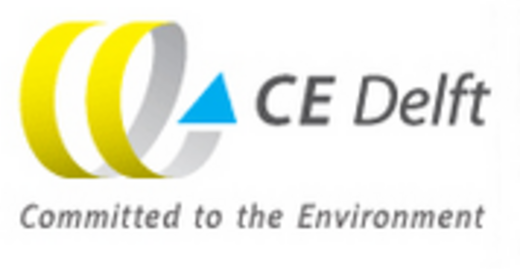Best practice examples
Results 91 to 100 of 148
Best practiceProduct: Transport refrigeration unit
In cooperation with Transfrig, the only South African manufacturer of transport refrigeration systems, GIZ South Africa has completed field testing of a R290 prototype refrigerated transport system in 2017. The R290 prototype has a global warming potential (GWP) of just 3, compared to 3922 of conventional R404 systems. The main aspects that were addressed during the design of the system were circuit optimization and integration of safety measures in order to achieve the same cooling capacities as R404 systems, whilst maximizing the coefficient of performance and reducing refrigerant charge. A leak identification feature was integrated into the system, whereby a suspected leak would result in a shut-down of the system. The product was developed under the project “Emission mitigation in the transport refrigeration sector through the introduction of innovative logistics and supply structures in South Africa”. It is funded by the German Federal Ministry for the Environment, Nature Conservation, Building and Nuclear Safety (BMUB), with the South African Department of Trade and Industry as the leas executing agency. …
Best practiceProduct: Transport refrigeration unit
In cooperation with Transfrig, the only South African manufacturer of transport refrigeration systems, GIZ South Africa has completed field testing of a R290 prototype refrigerated transport system in 2017. The R290 prototype has a global warming potential (GWP) of just 3, compared to 3922 of conventional R404 systems. The main aspects that were addressed during the design of the system were circuit optimization and integration of safety measures in order to achieve the same cooling capacities as R404 systems, whilst maximizing the coefficient of performance and reducing refrigerant charge. A leak identification feature was integrated into the system, whereby a suspected leak would result in a shut-down of the system. The product was developed under the project “Emission mitigation in the transport refrigeration sector through the introduction of innovative logistics and supply structures in South Africa”. It is funded by the German Federal Ministry for the Environment, Nature Conservation, Building and Nuclear Safety (BMUB), with the South African Department of Trade and Industry as the leas executing agency. …
Best practiceProduct: Ultra silent energy efficiency: the CXVE Evaporative Condenser
The CXVE condenser unit by the Baltimore Aircoil Company (BAC) offers maximum performance at the lowest possible energy input and refrigerant charge, reducing energy costs for industrial refrigeration applications by up to 50%. The CXVE condenser unit minimizes system-wide energy consumption by ensuring unrivalled efficient heat rejection at the lowest possible energy input and refrigerant charge. The low noise axial fans of the CXVE use 50% less energy than similar centrifugal fan units and produce minimal noise, such that they are ideal for industrial refrigeration applications with low sound and energy requirements. The CXVE design allows easy on-site assembly, arrangement into multi cells for large capacity requirements as well as easy access of all critical components for inspection/maintenance, hereby facilitating installation and operation. …
Best practiceProduction conversion to natural refrigerants
The number of room air conditioners is rising quickly throughout the world and especially in developing countries with warm climates. According to IEA, there could be over 3.7 billion room ACs in use in 2050. Emissions from room air conditioning will increase dramatically. Besides the decarbonisation of energy supply, increasing the appliances’ energy efficiency and using climate-friendly natural refrigerants are the only way towards zero-carbon and “green” cooling. HEAT has supported a pioneering room AC production conversion project which was implemented by GIZ and funded by the Federal Ministry of the Environment, Nature Conservation and Nuclear Safety (BMU). The Indian manufacturer Godrej ozone- and climate-friendly natural refrigerant R290 and started selling it in 2012. HEAT experts provided technical support for the new product design with a special focus on energy efficient and safe operation. HEAT also supported the elaboration of technicians training regarding the safe handling of flammable refrigerants in this context. In several related projects, HEAT experts have assisted the conversion to natural refrigerants in the production of household refrigerators as well as to natural blowing agents in the production of foam. …

Best practicePROGreen Solutions Chiller Systems Use Carbon Dioxide, R744, as a Refrigerant
Utilizing carbon dioxide (CO2 or R744) as a refrigerant offers numerous environmental benefits, such as low global warming potential (GWP) and zero ozone depletion potential, as well as long-term financial benefits to the user. Continuous improvement and staying up to date with industry advancements are key to optimizing the use of CO2, and the PRO Refrigeration team does exactly that with their PROGreen Solutions team. • Environmental Impact: CO2 (R744) has a Global Warming Potential (GWP) rating of 1, meaning it has no impact on global warming. In comparison, PRO's other equipment uses the refrigerant R404A with a GWP of 3,900. By adopting CO2 refrigerant, PRO significantly reduces carbon emissions and contributes to environmental sustainability. • Energy Efficiency: CO2 systems can operate above the trans critical point, allowing for increased heat recovery of more than 100%. By generating hot water even during low cooling load and low ambient periods, CO2 system users can eliminate the need for fossil fuel heating sources while shrinking their carbon footprint. • Cost Efficiency: CO2 refrigerant costs are currently 95% lower per pound than common chemical-based refrigerants. Utilizing CO2 recovered from the atmosphere, PRO is eliminating the need for expensive synthetic refrigerants that all have a future phase-out date. …

Best practicePROHeat2o significantly reduces overall energy costs by maximizing chiller performance and effectively recovering waste heat.
PROHeat2o exemplifies best practices in heat recovery with its 2-step Heat Recovery Process, making use of waste heat for a variety of applications. The system is factory-installed within the standard chiller housing and is available on ALL PROChiller System models. In Step 1, waste heat from the refrigerant is harvested through a brazed stainless steel heat exchanger refrigerant-to-glycol water “recovery” loop. The closed “recovery” loop temperature closely follows the discharge refrigerant temperature. In Step 2, a second fluid-to-fluid heat exchanger is then utilized to pre-heat potable water for the customer. The pre-heated water feeds into the customer’s traditional water heating equipment, reducing (or even eliminating) their fossil fuel heating needs. This process allows for multiple benefits versus a single-step heat recovery system: • Lowered Energy Consumption: By utilizing otherwise wasted energy, PROHeat2o minimizes the consumption of electricity, propane, or natural gas for heating water, resulting in reduced energy bills and a smaller carbon footprint. Additionally, the system's dual fluid pumps can be turned on or off based on hot water demand, which adds to operating cost savings. • System Protection: By separating the Refrigerant from the potable water supply, PROHeat2o safeguards both the refrigeration system and the potable water supply, preventing potential damage or contamination. • Cost-Effective Maintenance: Expensive refrigeration repairs caused by low water quality are eliminated by the fluid-to-fluid heat exchanger for potable water heating. When heat exchanger fouling occurs, the low cost fluid to fluid heat exchanger is easily cleaned, or replaced, without extended downtime or high service costs. …
Best practiceProject: A platform for sorption cooling
Founded in Berlin in March 2009, the Green Chiller Association for Sorption Cooling is a platform of research facilities and manufacturers that are on the cutting edge of sorption chiller technologies in German-speaking countries. The Association was established to promote and develop solar and thermally-driven cooling technologies on a wide scale. Around 60% of all European manufacturer of sorption chillers in the small and medium-scale cooling capacity range are represented on the platform. All members offer closed sorption technologies like absorption cooling (working pair’s water/lithium bromide and ammonia/water) and adsorption cooling (water/silica gel and water/zeolith). The Association promotes the following main objectives: promoting and developing of the solar and thermal cooling markets in Germany and Europe, demonstration of different applications, and development of design tools and standardization. …

Best practiceProject: An analysis of the emissions and costs of electrical trailer cooling during rest periods
Under the European transport network (TEN-T) Programme, NomadPower is developing a power supply network for temperature-controlled transport on parking lots. Long-distance transport trailers use diesel to cool their goods for resting periods of nine hours or more, during which it would be possible to connect to an electric power supply. Around 95% of cooling trailers are equipped with an electric standby refrigeration option, but this is only used during long periods of (un)loading where a power supply is available. Providing a power supply at service station parking lots will enable the potential to use electric standby mode instead of diesel during extended rest periods. The study on environmental and cost benefits by CE Delft revealed that in Europe alone, 50-100 million hours of diesel consumption at service station parking lots can be replaced by electricity supply. This would save 130-260 million liters of diesel and 290-580 kilo tons of CO2, which corresponds to the annual emissions of 2,700-5,400 long-haul trucks. …
Best practiceProject: Energy efficient building cooling for the tropical climate
In cooperation with the Hawaii Natural Energy Institute, Sustainable Design & Consulting LLC (SDC) implemented a project to test space conditioning systems termed “comfort islands”. Comfort island provide locally limited comfort conditions for occupants, hereby avoiding the conditioning of an entire space. Localized spaces with comfort islands are not dehumidified, and therefore a large amount of cooling for latent heat removal can be spared. Ideally installed comfort islands can provide energy savings of up to 70% compared with conventional space heating. …
Best practiceProject: F-gas reduction in the Israeli refrigeration and air conditioning sector
The Bavarian State Ministry of the Environment and Consumer Protection (StMuV) and the Bavarian Environment Agency (LfU) have launched a multilateral cooperative effort with the Israel Ministry of Environmental Protection (MoEP) aimed at reducing fluorinated gases with high global warming potential in Israel’s refrigeration and air conditioning sectors. The main goal of the project (2014-2017) is to promote natural refrigerants such as hydrocarbons and ammonia in the cooling sector, in support of the international commitment made by Israel to the Montreal Protocol. The Deutsche Gesellschaft für Internationale Zusammenarbeit (GIZ) is the implementing partner of the project, facilitating the transfer of best practice examples between Bavaria and Israel. Selected Israeli experts participated in a two-week Cool Training Course in Maintal, Germany in March 2017, where they learned how a shift to climate-friendly cooling appliances is viable both from an economic and technical perspective. Moreover, two technical workshops will be organized with the MoEP in Israel for local RAC experts. By training local technicians and political stakeholders, the project supports Israel in promoting green technologies. …
